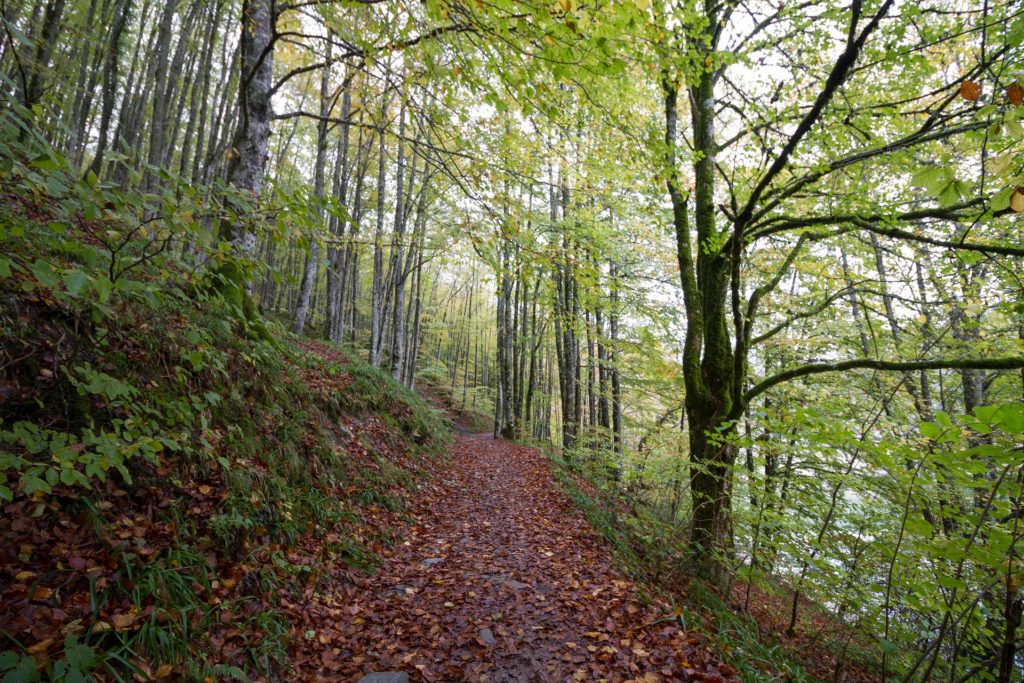New research indicates that full recovery of degraded ecosystems can last for centuries

Research published in the scientific journal Ecosistemas de la Asociación Española de Ecología Terrestre shows that temperate forests that have been conserved for more than 100 years after suffering centuries of human activity have not yet been fully recovered, a longer period than previously estimated. In the words of the authors of this study, “at first sight a forest that has many trees and other plants may seem recovered, but in addition to that, the trees, fungi and other species present must interact and this may even require centuries“.
This study, carried out in a beech forest in the north of Navarre, focused on evaluating both the richness and composition of ectomycorrhizal fungi, species that are found at the root of beeches and have demonstrated positive effects on the growth and survival of these trees through their interactions. The research team of this study, formed by professionals from the Basque Centre for Climate Change (BC3) and University of the Basque Country (UPV/EHU).

Asun Rodríguez, researcher at BC3, is a Phd student at the Basque Centre for Climate Change where, thanks to the REBECOM project, she researches the estimation of the recovery time of temperate forests after historical atrophic impacts along a complexity gradient.
This is an “uncommon” study, according to the author of the reference, Asun Rodríguez, since the research has been carried out on the Artikutza farm, a place where no human impact has been produced (forestry, livestock breeding) for more than 100 years.This has favoured the development of a beech forest in good conservation status (declared a Special Conservation Area by the Navarrese government) in an area that has been affected by open-pit iron extraction since at least the 14th century.
Prioritizing conservation over degradation
The most relevant conclusions of this study at scientific level, is that temperate forests that have been conserved since the abandonment of human impact are able to recover in terms of the richness of species of ectomycorrhizal fungi, but the same does not apply to the composition of these species, which requires more time. According to the researchers of this study, to know if an ecosystem has really recovered completely “It is not enough to evaluate simple indicators such as the variety or richness of species, but it is necessary to measure more complex recovery indicators such as species interaction networks“.
The research team further notes that, at the social level, the conclusions drawn from this study indicate that it is important for society to be aware that “it is a priority to conserve rather than degrade because the magnitude of that impact and the time required for recovery may be greater than previously estimated.”
“It is not enough to evaluate simple indicators such as the variety or richness of species, but it is necessary to measure more complex recovery indicators such as species interaction networks”
Therefore, as explained by Asun Rodríguez, compensation measures after a human impact, such as road construction or urbanization, “should be more demanding than the current ones” because the full recovery of ecosystems may require centuries and not a few decades “as is commonly assumed“.
Restoration processes with limited effectiveness
This study takes a further step in the evaluation of restoration processes, trying to analyze dynamics with a higher level of complexity, such as interactions between species, over a longer period of time (more than 100 years). Because, as they explain, “most restoration projects carry out a success assessment for a few years, which means that there are not many examples in which they have been monitored for several decades”.
The authors of this study consider that currently “the lack of knowledge about long-term dynamics at the level of interactions between species may be causing limitations in the efficiency of restoration processes“.
Speed up recovery processes
This research starts from the fact that there are proven positive effects on the presence of these fungi on the growth and survival of young beeches, on the resistance of beeches to drought and the decomposition of organic matter from mature beech trees.
So from the results obtained in this study, a new line of research is opened to identify those species of ectomycorrhizal fungi that play a more important role in the recovery of the ecosystem, which could be inoculated in plants used for revegetation of the affected area to accelerate its recovery. For this it is necessary to quantify the interaction between the beech and each species of ectomycorrhizal fungus, that is, to estimate how much nitrogen each species of fungus contributes to the beech and thus to be able to identify the species that should be prioritized in the restoration practices.

